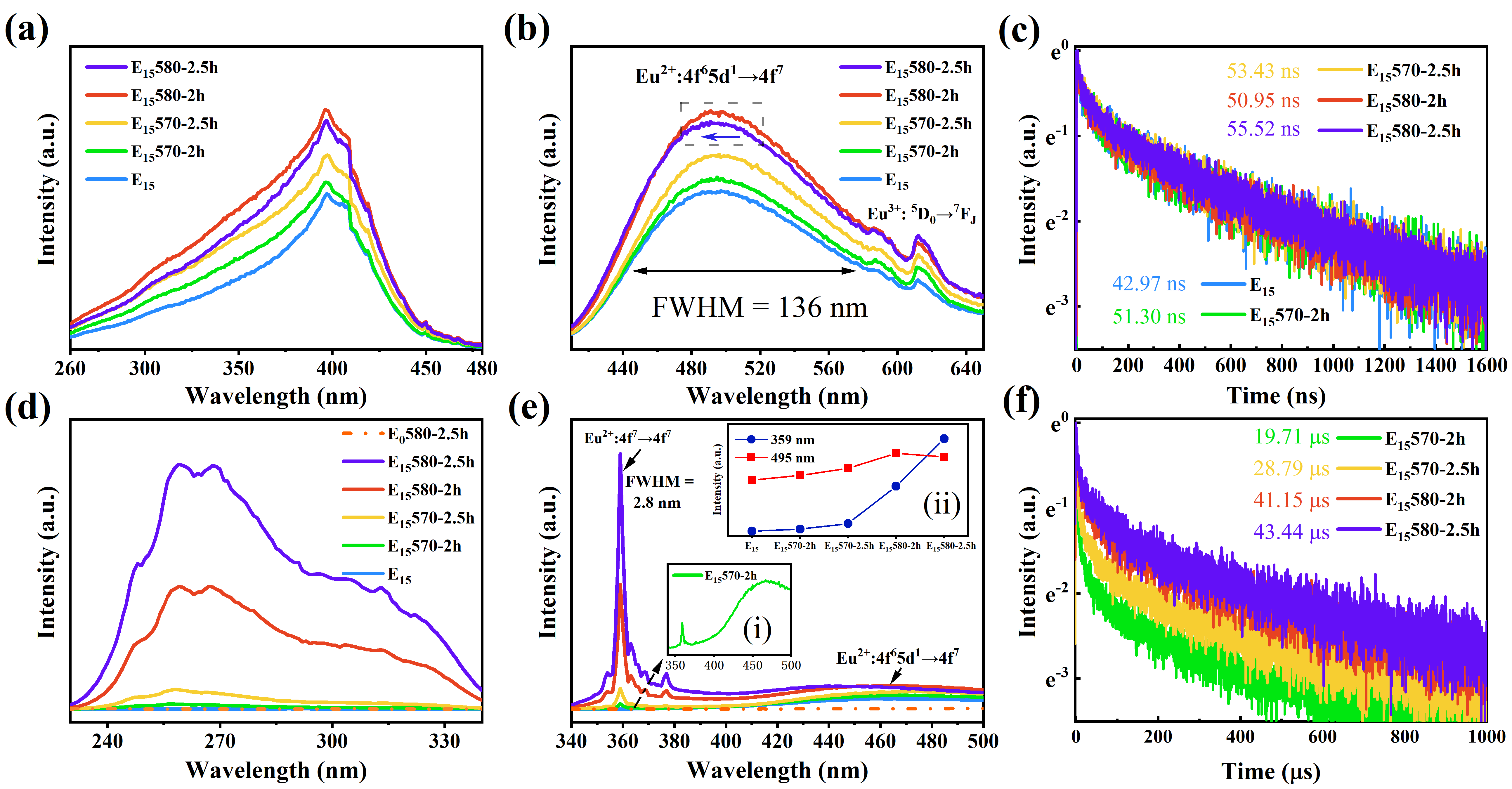
Researchers Make Progress in Developing Novel Transparent Glass Ceramics Exhibiting Narrowband Emission from Eu²⁺
Rare earth ions are essential in laser materials and lighting technology for their intricate energy level structures and excellent optical properties. However, the rare earth ions capable of laser output are mainly trivalent (such as Nd³⁺, Yb³⁺, etc.), and their laser output wavelengths are primarily in the infrared region. In contrast, although Eu²⁺ ions exhibit excellent luminescence efficiency in the 5d→4f transition, they struggle to achieve laser output due to the strong absorption of the 4f⁶5d¹ excited state. Researchers have discovered that Eu²⁺ can exhibit the 4f→4f transition luminescence in certain weak crystal field environments, which provides new possibilities for ultraviolet solid-state laser materials.
Recently, the research team from Shanghai Institute of Optics and Fine Mechanics, Chinese Academy of Sciences, first prepared Eu²⁺-doped glass using the high-temperature melting method under a reducing atmosphere and then obtained transparent glass ceramics through crystallization heat treatment. Through fluorescence spectroscopy, it was indicated that Eu²⁺ in the glass exhibited only broadband emission (FWHM ≈ 136 nm) from the 4f⁶5d¹→4f⁷ transition. However, after heat treatment, a narrowband emission at 359 nm (FWHM ≈ 2.8 nm) emerged in the glass ceramics, corresponding to the 4f⁷→4f⁷ transition of Eu²⁺.
The research team investigated the mechanism of the transition from the 4f⁶5d¹→4f⁷ transition to the 4f⁷→4f⁷ transition. The results indicate that, after glass crystallization, Eu²⁺ ions occupy the Ba²⁺ sites in BaAlBO₃F₂ (BABF) crystals, which have a weak crystal field strength and lead to a shift in the optical transition type. The new result, entitled “f → f transition luminescence of Eu2+ in barium-aluminum-borate oxyfluoride glass ceramics” was published in Journal of Materials Chemistry C on July 16, 2024.
This study achieved the first observation of the f→f transition luminescence of Eu²⁺ in glass ceramic materials, providing new insights into the optical transition mechanism of Eu²⁺ ions, with significant scientific importance and application prospects. The 359 nm narrowband emission of Eu²⁺ falls within the UVA range (320-380 nm), offering potential application value in UVA phototherapy lamps. In addition, the long fluorescence lifetime and narrowband emission properties of this material make it promising for applications in ultraviolet solid-state lasers, spectral correction, and phototherapy lamps.

Figure. Spectral properties of Eu2+ in glass and glass ceramic samples. (a) Excitation spectra, (b) emission spectra, and (c) fluorescence decay lifetime of the d→f transition. (d) Excitation spectra, (e) emission spectra, and (f) fluorescence decay lifetime of the f→f transitions.
Article website: https://doi.org/10.1039/D4TC01873G
Contact: ZHAO Mingjun
Advanced Laser and Optoelectronic Functional Materials Department,
Shanghai Institute of Optics and Fine Mechanics, CAS
Email: zhaomingjun@siom.ac.cn